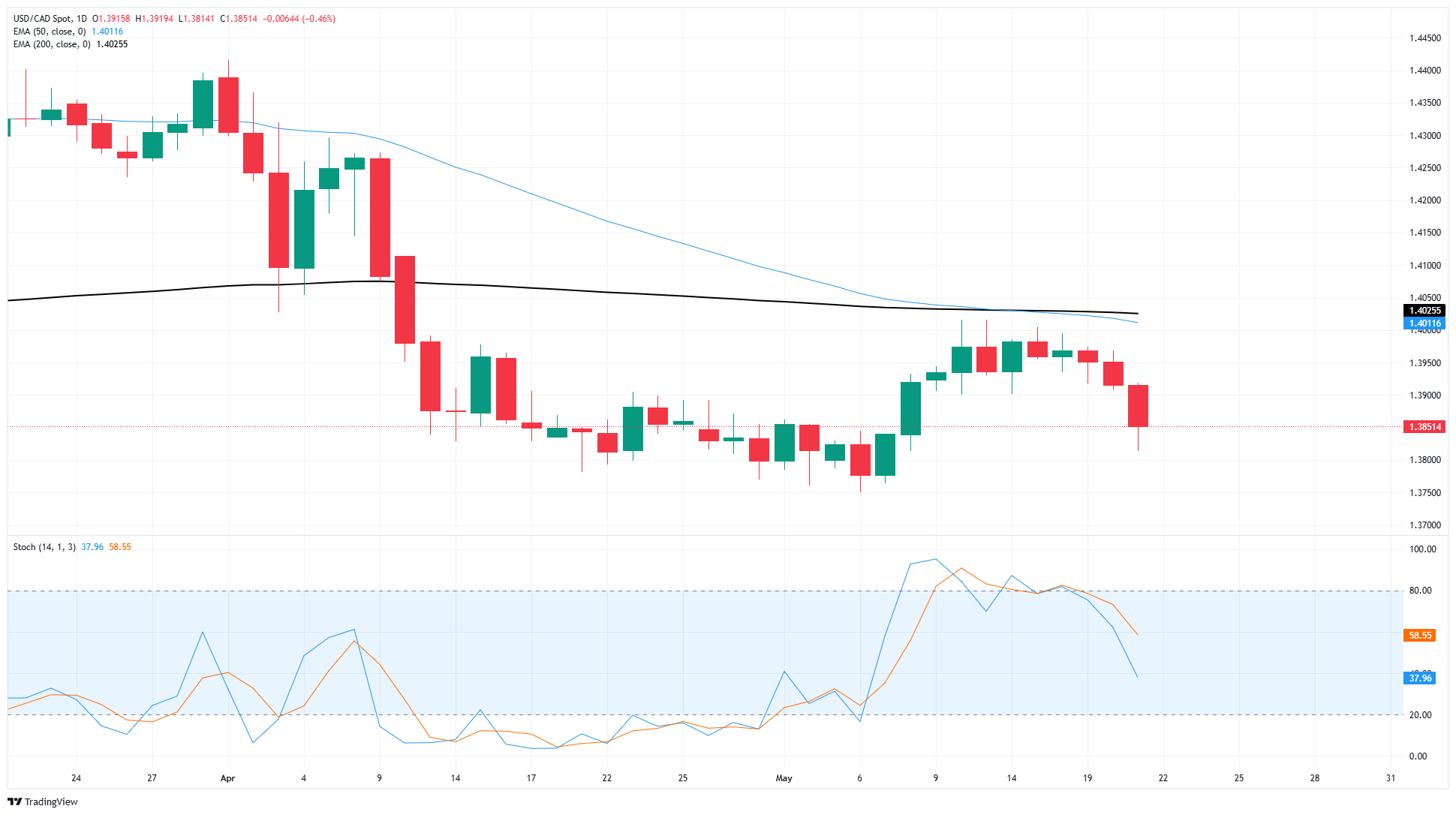Canadian Dollar rises as Greenback withers on Wednesday
- The Canadian Dollar climbed over 0.5% on Wednesday as markets hammer the US Dollar.
- Investors are growing apprehensive of the Greenback as Treasury yields climb.
- Federal budget deficit concerns and a stubbornly immovable Fed are crimping investor confidence.
The Canadian Dollar (CAD) caught a firm bid on Wednesday, climbing one-half of one percent during the midweek market session. It’s a data-light session during the American market window, and markets are roiling as federal debt headlines and rising Treasury yields spike market confidence into the floor.
Canadian New Housing Prices surprisingly contracted in April. The data is strictly low-tier, but the potential return of housing affordability in one of the most expensive developed countries in housing terms is providing some support for the Loonie. Impactful Canadian economic data will remain limited through the remainder of May, with the Bank of Canada’s (BoC) next rate call slated for June 4.
Daily digest market movers: Canadian Dollar catches a bid as markets fret over debt and yields
- The Canadian Dollar is on the rise in the near-term, but still has plenty of work remaining to pair May’s early losses.
- US Treasury bonds saw both rising yields and declining demand on Wednesday as US government debt concerns reignite.
- A recent rise in Crude Oil prices is helping to provide some support for the Loonie. Barrel bids have made a halting recovery from recent lows.
- The US government is on pace to pass President Donald Trump’s “big beautiful tax bill” that will add $4T to the US deficit over the next ten years.
- The spending-heavy, revenue-light budget comes hot on the heels of the US losing it’s triple-A sovereign debt rating from the Moody’s ratings agency for the first time in over a century.
Canadian Dollar price forecast
The Canadian Dollar has gained ground against the Greenback for three straight trading sessions, pushing USD/CAD back into defensive positioning and sending bids back down to the 1.33850 region. As the Loonie pares away near-term losses against the US Dollar, USD/CAD is caught in a downside pivot below the 200-day Exponential Moving Average (EMA) near 1.4025. Technical oscillators are still caught in a downside pivot, but still have plenty of room to run before hitting oversold territory, implying USD/CAD could have some room to move further lower.
USD/CAD daily chart

Canadian Dollar FAQs
The key factors driving the Canadian Dollar (CAD) are the level of interest rates set by the Bank of Canada (BoC), the price of Oil, Canada’s largest export, the health of its economy, inflation and the Trade Balance, which is the difference between the value of Canada’s exports versus its imports. Other factors include market sentiment – whether investors are taking on more risky assets (risk-on) or seeking safe-havens (risk-off) – with risk-on being CAD-positive. As its largest trading partner, the health of the US economy is also a key factor influencing the Canadian Dollar.
The Bank of Canada (BoC) has a significant influence on the Canadian Dollar by setting the level of interest rates that banks can lend to one another. This influences the level of interest rates for everyone. The main goal of the BoC is to maintain inflation at 1-3% by adjusting interest rates up or down. Relatively higher interest rates tend to be positive for the CAD. The Bank of Canada can also use quantitative easing and tightening to influence credit conditions, with the former CAD-negative and the latter CAD-positive.
The price of Oil is a key factor impacting the value of the Canadian Dollar. Petroleum is Canada’s biggest export, so Oil price tends to have an immediate impact on the CAD value. Generally, if Oil price rises CAD also goes up, as aggregate demand for the currency increases. The opposite is the case if the price of Oil falls. Higher Oil prices also tend to result in a greater likelihood of a positive Trade Balance, which is also supportive of the CAD.
While inflation had always traditionally been thought of as a negative factor for a currency since it lowers the value of money, the opposite has actually been the case in modern times with the relaxation of cross-border capital controls. Higher inflation tends to lead central banks to put up interest rates which attracts more capital inflows from global investors seeking a lucrative place to keep their money. This increases demand for the local currency, which in Canada’s case is the Canadian Dollar.
Macroeconomic data releases gauge the health of the economy and can have an impact on the Canadian Dollar. Indicators such as GDP, Manufacturing and Services PMIs, employment, and consumer sentiment surveys can all influence the direction of the CAD. A strong economy is good for the Canadian Dollar. Not only does it attract more foreign investment but it may encourage the Bank of Canada to put up interest rates, leading to a stronger currency. If economic data is weak, however, the CAD is likely to fall.
